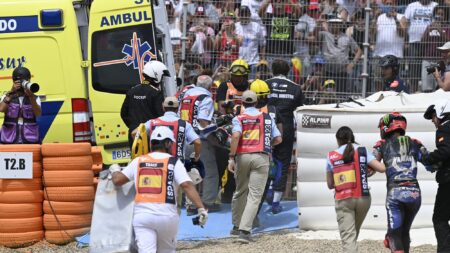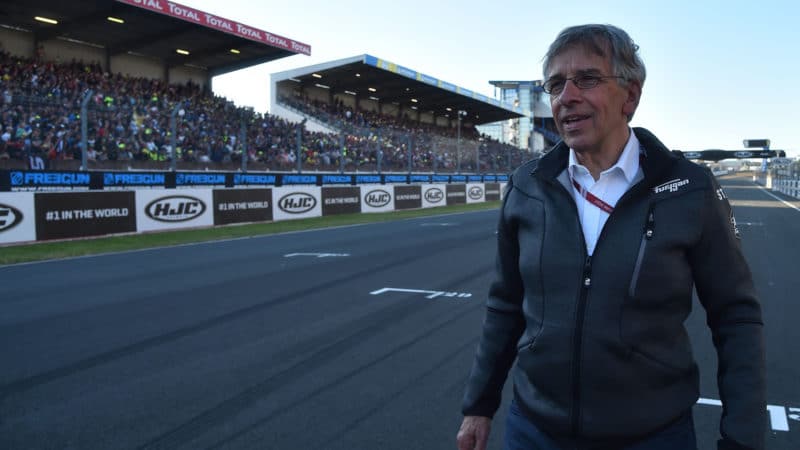My comrades in this adventure are locals Kevin and Ophélie, who have been partaking in this lunacy for years. And they’re laughing too. All around is insanity, beautiful insanity.
Welcome to the MotoGP campsite at Le Mans, which stretches as far as you can see in all directions like a vast warzone: flames erupting here and there, while palls of black, oily smoke hang over the scene as the sun goes down, ushering in the night, when the real crazies come out to play.
Under cover of darkness the place goes completement gaga – like an illegal rave in the countryside, except the crazies aren’t gyrating to a trance beat, they’re jumping up and down to the pop-pop-pop of engines that can’t be far from death.
Only the brave dare stumble through the gates of Hades and into this particular Valley of Death, I’m told. Nonsense, of course. Before I walked into the campsite on Friday evening I had various MotoGP paddock people warning me, “Well, it was nice knowing you…” or “You’ll be lucky to get out alive…”.
Bullshit. The bullet-free Le Mans war zone is super-cool. I saw nothing bad happening (well, nothing I’d call bad, although the fun police might disagree). The only things I saw being tortured to death while voyeurs oohed and aahed in delight were a few dozen perfectly serviceable motorcycles.
Le Mans is Mad Max made real, a petrol-head’s Glastonbury or Burning Man. People go there for the happening. It doesn’t matter who’s headlining at Glasto or who’s going to be on the front row at Le Mans, you go because it’s Glasto and you go because it’s Le Mans.
They are both sacred events, except that the Le Mans crazies get high on the fumes of burnt petrol and melting rubber, not ecstasy or acid.
For three days bikers get to live in their own little world, a counter-culture bubble that’s a million miles from the realities of everyday life.
And apparently, there is racing. The world’s best motorcycle riders are risking life and limb for gold and glory just over there. But only if you can be arsed to get off your backside and leave the campsite, where you can be whoever you want to be and do whatever you want to do.
It’s all good, atavistic fun. But in all seriousness, happenings like Glastonbury and the Le Mans MotoGP weekend (the 24-hour race is even wilder) do serve an important social purpose.
Modern society becomes more regimented, more restricted and more uniform. Some people refuse to conform and live in that box, so they run screaming from their workaday existences to ‘safety-valve’ events like Le Mans, Glastonbury and Burning Man.






